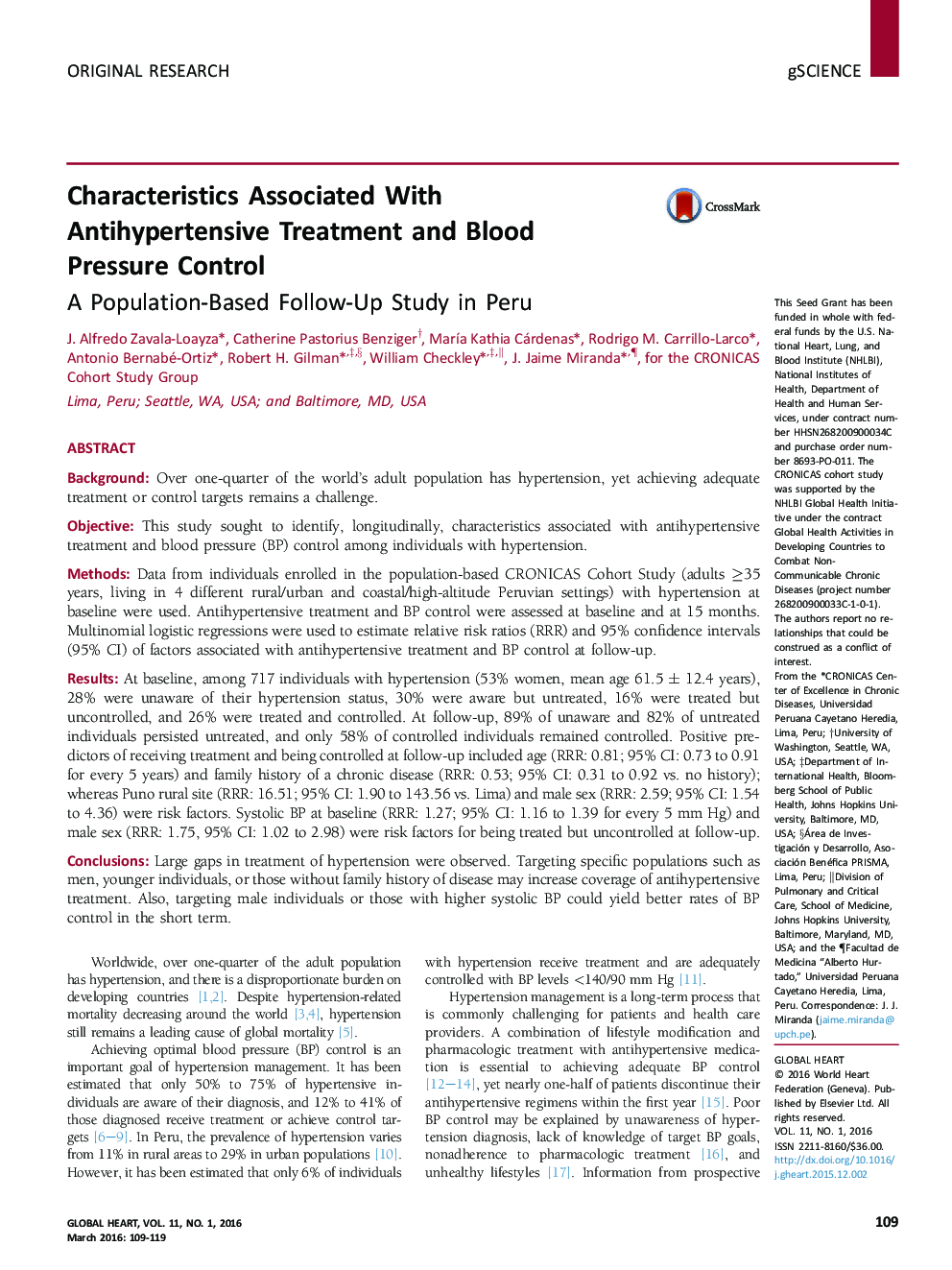| کد مقاله | کد نشریه | سال انتشار | مقاله انگلیسی | نسخه تمام متن |
|---|---|---|---|---|
| 5958666 | 1175621 | 2016 | 11 صفحه PDF | دانلود رایگان |
- The majority of subjects with hypertension correspond to the unaware (28%) or aware but untreated (30%) categories.
- Between of 80% and 90% of patients in these 2 groups remain untreated at 15 months.
- Forty-two percent of individuals whose blood pressure was controlled at baseline no longer do so at follow-up.
- Implementation designs tailored to groups according to their risk profile together with patients' challenges and needs are required.
BackgroundOver one-quarter of the world's adult population has hypertension, yet achieving adequate treatment or control targets remains a challenge.ObjectiveThis study sought to identify, longitudinally, characteristics associated with antihypertensive treatment and blood pressure (BP) control among individuals with hypertension.MethodsData from individuals enrolled in the population-based CRONICAS Cohort Study (adults â¥35 years, living in 4 different rural/urban and coastal/high-altitude Peruvian settings) with hypertension at baseline were used. Antihypertensive treatment and BP control were assessed at baseline and at 15 months. Multinomial logistic regressions were used to estimate relative risk ratios (RRR) and 95% confidence intervals (95% CI) of factors associated with antihypertensive treatment and BP control at follow-up.ResultsAt baseline, among 717 individuals with hypertension (53% women, mean age 61.5 ± 12.4 years), 28% were unaware of their hypertension status, 30% were aware but untreated, 16% were treated but uncontrolled, and 26% were treated and controlled. At follow-up, 89% of unaware and 82% of untreated individuals persisted untreated, and only 58% of controlled individuals remained controlled. Positive predictors of receiving treatment and being controlled at follow-up included age (RRR: 0.81; 95% CI: 0.73 to 0.91 for every 5 years) and family history of a chronic disease (RRR: 0.53; 95% CI: 0.31 to 0.92 vs. no history); whereas Puno rural site (RRR: 16.51; 95% CI: 1.90 to 143.56 vs. Lima) and male sex (RRR: 2.59; 95% CI: 1.54 to 4.36) were risk factors. Systolic BP at baseline (RRR: 1.27; 95% CI: 1.16 to 1.39 for every 5 mm Hg) and male sex (RRR: 1.75, 95% CI: 1.02 to 2.98) were risk factors for being treated but uncontrolled at follow-up.ConclusionsLarge gaps in treatment of hypertension were observed. Targeting specific populations such as men, younger individuals, or those without family history of disease may increase coverage of antihypertensive treatment. Also, targeting male individuals or those with higher systolic BP could yield better rates of BP control in the short term.
Journal: Global Heart - Volume 11, Issue 1, March 2016, Pages 109-119
